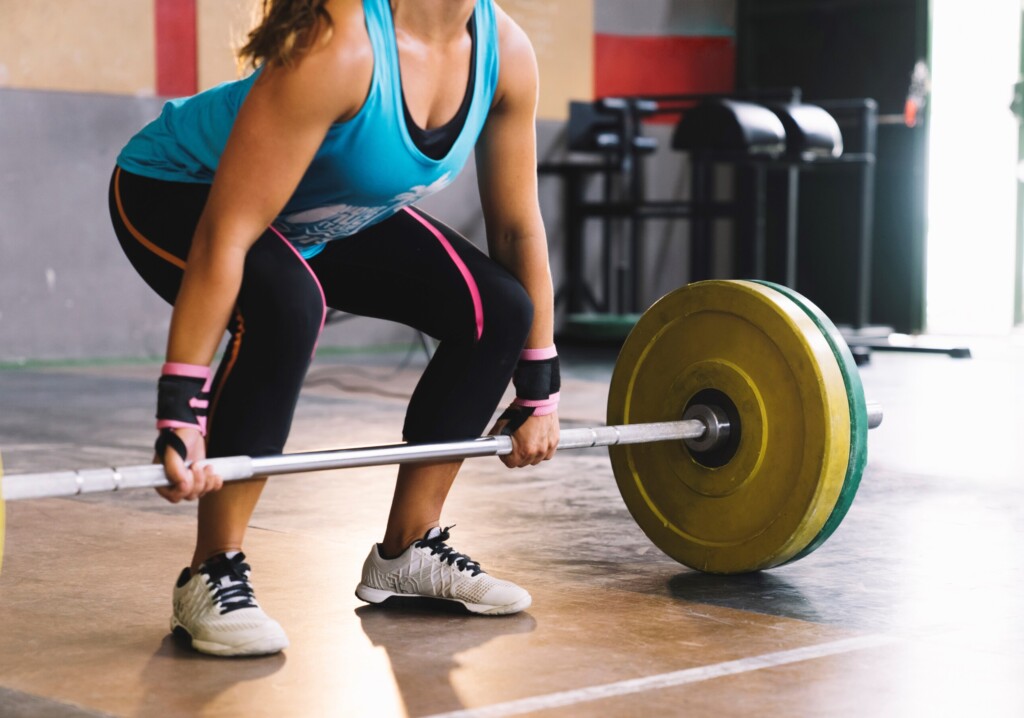
The deadlift is one of the best exercises for building total body strength and muscle mass. It is a compound movement that targets the entire posterior chain, including the back, glutes, hamstrings, and calves. Deadlifts can be performed with a variety of equipment, including barbells, dumbbells, and kettlebells. In this article, we will focus on deadlifting with free weights, specifically barbells and dumbbells.
Why Deadlift with Free Weights?
Deadlifting with free weights provides a number of benefits over using machines or other equipment. Firstly, free weights allow for a greater range of motion and more natural movement patterns, which can help to recruit more muscle fibers and build functional strength. Additionally, using free weights requires more stabilizer muscles to be engaged, which can help to improve overall balance and coordination.
Another advantage of using free weights is that they allow for greater customization of the lift. With machines, the range of motion is often fixed, and the resistance is predetermined. With free weights, you can adjust the weight, grip, and stance to suit your individual needs and goals.
Barbell Deadlifts

The barbell deadlift is the most common variation of the deadlift, and for good reason. It allows you to lift the most weight and provides the most overall stimulation to the body. Here's how to perform a barbell deadlift:
- Stand with your feet shoulder-width apart, with the barbell on the ground in front of you.
- Bend at the hips and knees, keeping your back straight, and grip the bar with an overhand grip just outside of your knees.
- Take a deep breath and brace your core.
- Drive through your heels and lift the bar off the ground, keeping it close to your body.
- Stand up tall, squeezing your glutes and keeping your shoulders back.
- Lower the bar back down to the ground, keeping your back straight and your core tight.
It's important to note that form is crucial when performing the barbell deadlift. Make sure to keep your back straight and your core tight throughout the lift, and avoid rounding your back or jerking the weight up.
Dumbbell Deadlifts

Dumbbell deadlifts are a great variation for those who don't have access to a barbell or who want to target their grip and core muscles more directly. Here's how to perform a dumbbell deadlift:
- Stand with your feet shoulder-width apart, holding a pair of dumbbells at your sides.
- Bend at the hips and knees, keeping your back straight, and lower the dumbbells to the ground.
- Take a deep breath and brace your core.
- Drive through your heels and lift the dumbbells off the ground, keeping them close to your body.
- Stand up tall, squeezing your glutes and keeping your shoulders back.
- Lower the dumbbells back down to the ground, keeping your back straight and your core tight.
When performing dumbbell deadlifts, make sure to keep your shoulders back and your chest up throughout the lift. This will help to engage your core and prevent your back from rounding.
Deadlift Variations

There are many different variations of the deadlift, each with their own benefits and challenges. Here are a few common variations:
- Sumo deadlifts: performed with a wider stance and a more upright posture, targeting the inner thighs and glutes.
- Romanian deadlifts: performed with a slight bend in the knees and a greater emphasis on the hamstrings and lower back.
- Single-leg deadlifts: performed on one leg, targeting balance, stability, and unilateral strength.
It's important to vary your deadlift routine to prevent plateaus and ensure balanced development of all muscle groups.
Programming Your Deadlift Workouts

When programming your deadlift workouts, it's important to consider your goals, fitness level, and recovery capacity. Here are some general guidelines:
- Beginners: start with light weights and focus on perfecting your form. Aim to deadlift once or twice a week, with at least two days of rest in between.
- Intermediate lifters: gradually increase the weight and volume of your deadlifts, incorporating variations and accessory exercises as needed. Aim to deadlift two to three times a week, with at least one day of rest in between.
- Advanced lifters: focus on increasing intensity and specificity, using heavy weights and advanced variations. Aim to deadlift two to four times a week, with at least one day of rest in between.
It's also important to listen to your body and adjust your programming as needed. If you are experiencing pain or fatigue, take a break or lighten your load.
Conclusion
Deadlifting with free weights is an essential exercise for building total body strength and muscle mass. Whether you prefer barbells or dumbbells, there are many variations to choose from to keep your workouts challenging and effective. Make sure to focus on perfect form, vary your routine, and adjust your programming as needed to achieve your goals.